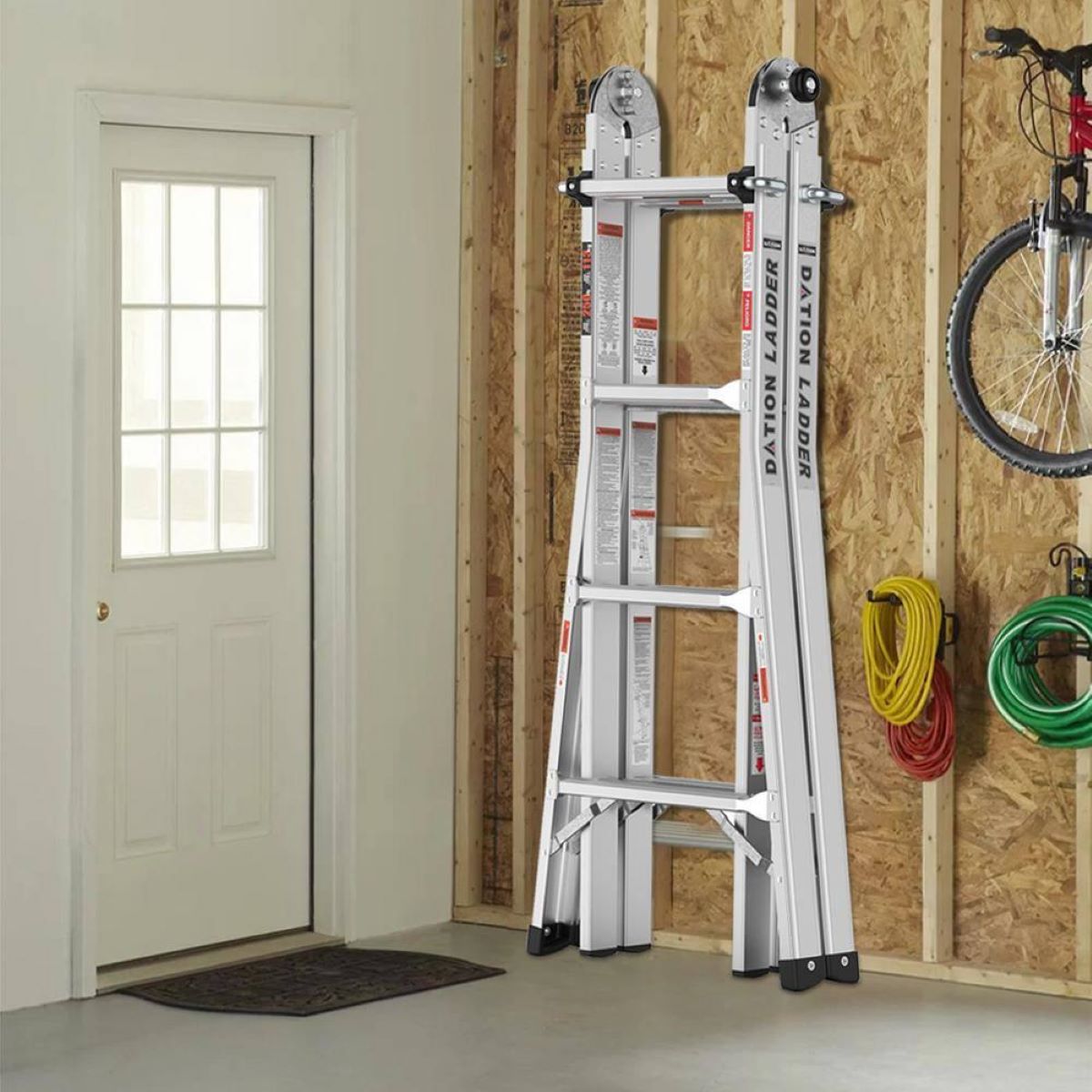

Articles
How To Properly Move An Articulated Ladder
Modified: May 6, 2024
Discover efficient ways to move an articulated ladder with our helpful articles. Get expert advice on maximizing mobility and safety.
(Many of the links in this article redirect to a specific reviewed product. Your purchase of these products through affiliate links helps to generate commission for Storables.com, at no extra cost. Learn more)
Introduction
An articulated ladder is a versatile and essential tool for various tasks, both indoor and outdoor. Its adjustable design allows it to be used in multiple configurations, making it ideal for reaching different heights and working on uneven surfaces. Whether you are a professional tradesperson or a DIY enthusiast, learning how to properly move an articulated ladder is crucial for your safety and the successful completion of your projects.
In this article, we will guide you through the process of moving an articulated ladder, providing step-by-step instructions and essential safety precautions. We will also share some useful tips and common mistakes to avoid. By following these guidelines, you can confidently and efficiently move your articulated ladder, ensuring a secure and stable working platform.
Before we delve into the details, let’s take a closer look at what exactly an articulated ladder is.
Key Takeaways:
- Safety is paramount when moving an articulated ladder. Prioritize ladder inspection, engage safety locks, and maintain balance to ensure a smooth and secure transition.
- Maneuvering an articulated ladder requires planning and caution. Use proper lifting techniques, take small controlled steps, and avoid common mistakes to enhance safety and efficiency.
Understanding the Articulated Ladder
An articulated ladder, also known as a multi-position ladder or a combination ladder, is a versatile ladder that can be adjusted into multiple positions to suit different tasks and working conditions. It consists of multiple sections, typically three or four, that are connected by hinges or joints. These hinges allow the ladder to be folded or extended, providing flexibility and adaptability.
One of the main advantages of an articulated ladder is its ability to transform into different configurations, such as an A-frame ladder, an extension ladder, a staircase ladder, or a trestle ladder. This versatility allows you to use a single ladder for various applications, reducing the need for multiple ladder types and saving both time and storage space.
Articulated ladders are usually made from lightweight yet durable materials, such as aluminum or fiberglass, making them easy to transport and maneuver. They also feature non-slip rungs or steps and a stabilizing mechanism, such as outriggers or foot pads, to enhance stability and prevent accidents.
When choosing an articulated ladder, it is essential to consider factors such as maximum weight capacity, ladder height, and the number of positions it can be adjusted to. Additionally, ensure that the ladder meets the safety standards set by relevant regulatory bodies, such as ANSI (American National Standards Institute) or OSHA (Occupational Safety and Health Administration).
Now that we have a better understanding of what an articulated ladder is, let’s move on to the safety precautions you need to take before attempting to move one.
Safety Precautions
Before moving an articulated ladder, it is crucial to prioritize safety. Taking the necessary precautions will help prevent accidents and injuries. Here are some essential safety measures to keep in mind:
- Inspect the ladder: Before using an articulated ladder, thoroughly inspect it for any visible damage, such as broken rungs, loose hinges, or cracks in the frame. If you notice any issues, do not attempt to move or use the ladder. Instead, replace or repair it before proceeding.
- Choose a stable location: Select a level and firm surface for positioning the ladder. Avoid placing it on slippery or uneven ground, which can compromise stability.
- Clear the area: Ensure the surrounding area is clear of any obstacles, debris, or tripping hazards. This will minimize the risk of accidents and allow you to maneuver the ladder safely.
- Use the ladder within its weight capacity: Every articulated ladder has a maximum weight capacity that should not be exceeded. Be mindful of the weight of yourself, tools, and any materials you may be carrying while using the ladder.
- Maintain three points of contact: When climbing the ladder, always have three points of contact – either two hands and one foot or two feet and one hand – to ensure stability and balance.
- Engage the safety locks: Articulated ladders often come with safety locks that secure the ladder in its various configurations. Be sure to engage these locks before moving the ladder to prevent accidental folding or collapsing.
- Communicate and warn others: If you are working in a shared space, inform others about your intention to move the ladder and warn them to keep a safe distance. This will help avoid collisions or disturbances while you are in motion.
- Wear appropriate personal protective equipment (PPE): Depending on the task at hand, wear PPE such as a hard hat, safety glasses, and non-slip footwear to protect yourself from potential hazards.
By adhering to these safety precautions, you can minimize the risk of accidents and create a secure working environment. Now, let’s move on to the step-by-step instructions for moving an articulated ladder.
Step-by-Step Instructions for Moving an Articulated Ladder
Moving an articulated ladder requires careful planning and execution. Follow these step-by-step instructions to ensure a smooth and safe transition:
- Choose the appropriate ladder configuration: Determine the specific ladder configuration that will best suit your current task and working conditions. Whether you need an A-frame ladder, an extension ladder, or another position, select the configuration that provides the optimal height and stability for your needs.
- Clean and secure the workspace: Clear any obstructions or debris from the area where you will be positioning the ladder. This will prevent tripping hazards and ensure a safe working environment.
- Engage the ladder safety locks: Before moving the ladder, make sure that all safety locks or mechanisms are engaged. These locks will help keep the ladder securely in place during the transition.
- Inform others and create a safe zone: Communicate your intention to move the ladder to anyone in the vicinity and ensure they maintain a safe distance. Mark off a secure area around the ladder to prevent accidental contact or collisions.
- Grip the ladder at the appropriate position: Carefully grip the ladder at a stable point, such as a sturdy rung or the frame, ensuring a firm hold before initiating any movement.
- Walk and reposition the ladder: Take small, deliberate steps while maintaining a firm grip on the ladder. Slowly and steadily reposition the ladder to the desired location, ensuring that it remains stable and balanced throughout the movement.
- Secure the ladder in the new position: Once you have reached the desired location, ensure that the ladder is properly secured and stable. Engage the safety locks or mechanisms to prevent any accidental folding or collapsing.
- Inspect the ladder and surroundings: Before ascending the ladder, perform a final inspection to ensure that it is in good condition and that the area is free from hazards. This includes checking for any instability or visible damage.
Remember to maintain proper posture and stability while moving the ladder to minimize the risk of accidents. These step-by-step instructions will help you move your articulated ladder safely and efficiently. In the next section, we will share some useful tips for maneuvering the ladder with ease.
When using an articulated ladder, always make sure it is fully extended and locked into place before climbing. To move the ladder, carefully lower it to the ground and then reposition as needed.
Tips for Maneuvering the Articulated Ladder
Maneuvering an articulated ladder can be a challenging task, especially if you are working in tight spaces or on uneven surfaces. Here are some tips to help you navigate the ladder with ease:
- Plan your movements: Before moving the ladder, take a moment to plan your path and anticipate any obstacles or potential hazards you may encounter along the way. This will help you navigate more smoothly and avoid unnecessary detours or accidents.
- Use proper lifting techniques: When lifting or repositioning the ladder, remember to bend your knees and use your leg muscles to generate power. Avoid twisting or jerking motions that can strain your back or cause instability.
- Take small, controlled steps: Instead of rushing or attempting to move the ladder quickly, take small steps to maintain control and stability. This will also minimize the chances of slipping or losing balance.
- Utilize a ladder assistant: If possible, enlist the help of a second person or use specialized ladder accessories to assist with moving the ladder. This can provide additional stability and make the process more manageable.
- Use leveling mechanisms: Many articulated ladders come with built-in leveling mechanisms or adjustable legs. Take advantage of these features to ensure the ladder remains stable on uneven or sloped surfaces.
- Take breaks when needed: Moving a ladder can be physically demanding, especially if you are working on a larger project. Take regular breaks to rest and re-energize, helping you maintain focus and reduce the risk of fatigue-related accidents.
- Practice ladder safety: Always follow basic ladder safety practices, such as maintaining three points of contact, facing the ladder while ascending or descending, and avoiding leaning or overreaching. These habits will enhance stability and reduce the chances of falls.
- Consider the weight distribution: If you need to carry tools or materials while moving the ladder, distribute the weight evenly to maintain balance. This will prevent the ladder from becoming top-heavy and tipping over.
By keeping these tips in mind, you can maneuver your articulated ladder more efficiently while reducing the risk of accidents or injuries. In the next section, we will discuss some common mistakes to avoid when moving an articulated ladder.
Read more: What Is An Articulated Ladder
Common Mistakes to Avoid
When it comes to moving an articulated ladder, certain mistakes can lead to accidents or damage to the ladder itself. By being aware of these common errors, you can take proactive measures to avoid them. Here are some common mistakes to steer clear of:
- Skipping the ladder inspection: Neglecting to inspect the ladder before moving it can be a recipe for disaster. Always check for any visible damage, loose parts, or safety issues before initiating any movement.
- Not engaging the safety locks: Failing to engage the ladder’s safety locks is a common oversight that can result in accidental folding or collapsing. Ensure that all safety mechanisms are properly engaged and functioning before attempting to move the ladder.
- Overloading the ladder: Exceeding the ladder’s weight capacity by carrying heavy tools or materials can compromise its stability and put you at risk of falling. Always adhere to the ladder’s weight limit and distribute the weight evenly.
- Moving the ladder too quickly: Rushing while moving the ladder can lead to loss of balance or destabilization. Take your time, and move the ladder slowly and deliberately, focusing on maintaining control and stability.
- Ignoring the surroundings: Failing to clear the area around the ladder or neglecting to communicate with others working nearby can lead to accidents or collisions. Always ensure the workspace is clear and that others are aware of your movements.
- Using improper lifting techniques: Lifting or repositioning the ladder using incorrect techniques, such as twisting or jerking motions, can strain your muscles or cause instability. Use proper lifting techniques, bending your knees and using your leg muscles to generate power.
- Neglecting balance and stability: Maintaining balance and stability is crucial when moving an articulated ladder. Avoid leaning too far in one direction, overreaching, or placing excessive weight on one side of the ladder.
- Ignoring the ladder’s limitations: Each ladder has its own set of limitations, such as maximum height or weight capacity. Understanding and respecting these limitations is essential to ensure safe and efficient use of the ladder.
By avoiding these common mistakes, you can enhance your safety and prolong the lifespan of your articulated ladder. Remember to prioritize caution and adhere to proper ladder usage guidelines at all times. Now, let’s wrap up this article.
Conclusion
Moving an articulated ladder may seem like a simple task, but it should not be taken lightly. By following the proper techniques and safety precautions, you can ensure a smooth and secure transition while minimizing the risk of accidents or damage. Understanding the various ladder configurations, inspecting the ladder for any damage, and engaging the safety locks are vital steps in the process. Taking care to choose a stable location, clear the area, and maintain three points of contact while maneuvering the ladder are essential for your safety.
Remember to plan your movements, use proper lifting techniques, and take small, controlled steps when moving the ladder. Utilize any available leveling mechanisms and consider the weight distribution to maintain stability on uneven surfaces. Taking breaks when necessary and practicing basic ladder safety, such as maintaining three points of contact and avoiding overreaching, will further enhance your safety while moving the ladder.
Avoiding common mistakes, such as skipping ladder inspections, not engaging the safety locks, or overloading the ladder, will help prevent accidents and preserve the integrity of the ladder. Similarly, being aware of your surroundings, communicating with others, and using proper lifting techniques are crucial for creating a safe work environment.
By incorporating these guidelines into your ladder-moving routine, you can confidently and efficiently move your articulated ladder, ensuring your safety and the successful completion of your projects. Remember, safety should always be your top priority when working with ladders.
So, whether you are a professional tradesperson or a DIY enthusiast, always make sure to follow the proper procedures, educate yourself on ladder safety, and exercise caution during every step of using an articulated ladder. Stay safe and happy ladder maneuvering!
Now you've mastered moving articulated ladders safely, why not delve deeper into what makes these tools so versatile? Our next piece, What Is An Articulated Ladder, sheds light on the unique design and functionality that set articulated ladders apart from conventional ones. This guide is perfect for both seasoned users looking to refresh their knowledge and newcomers eager to understand their new equipment. Don't miss out on this essential read that complements your newfound ladder-moving skills!
Frequently Asked Questions about How To Properly Move An Articulated Ladder
Was this page helpful?
At Storables.com, we guarantee accurate and reliable information. Our content, validated by Expert Board Contributors, is crafted following stringent Editorial Policies. We're committed to providing you with well-researched, expert-backed insights for all your informational needs.

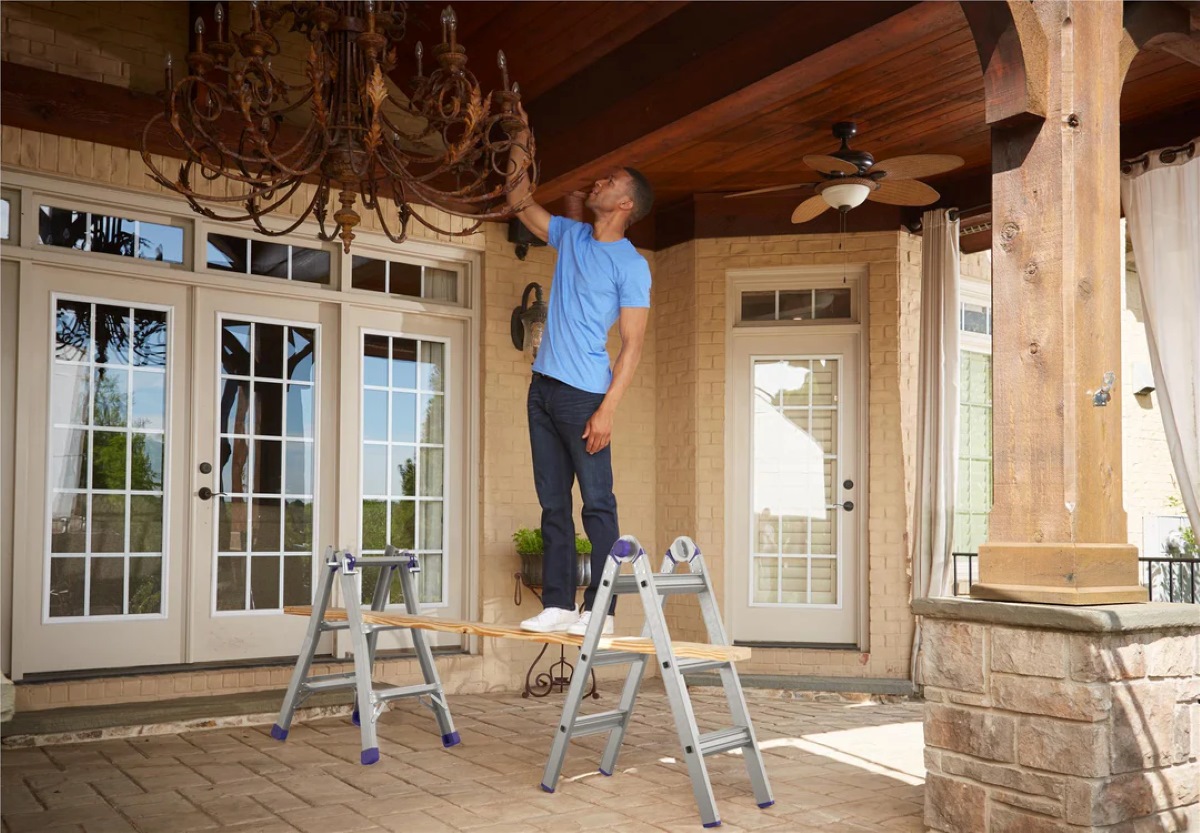
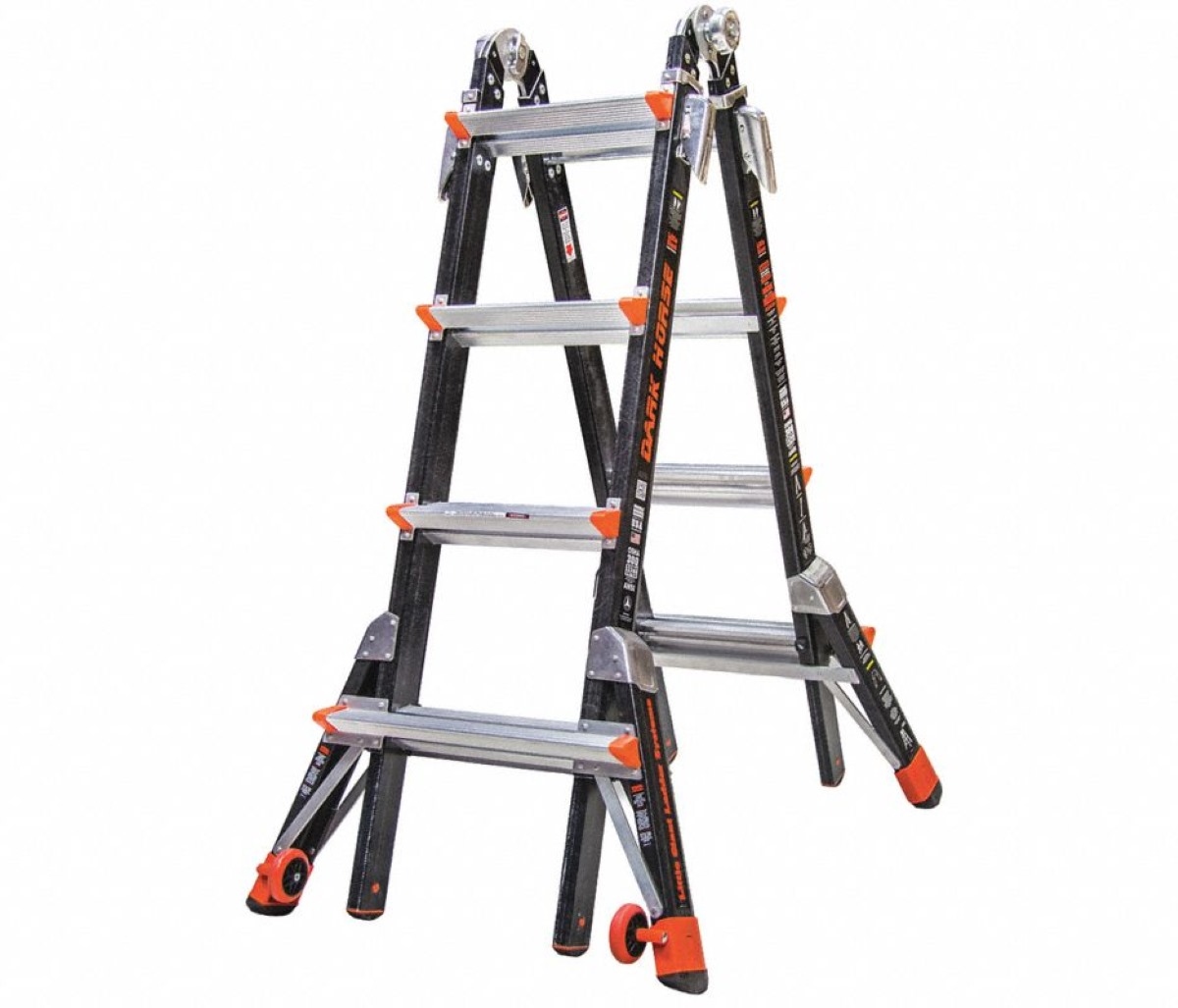
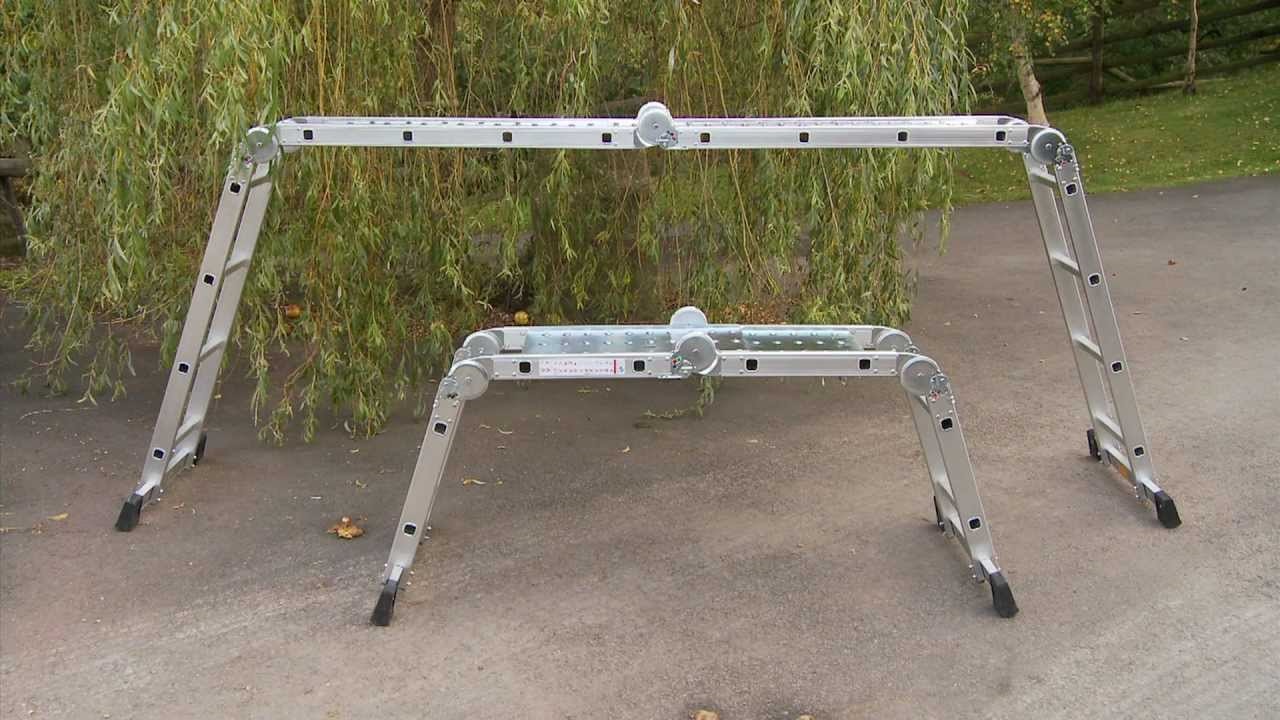
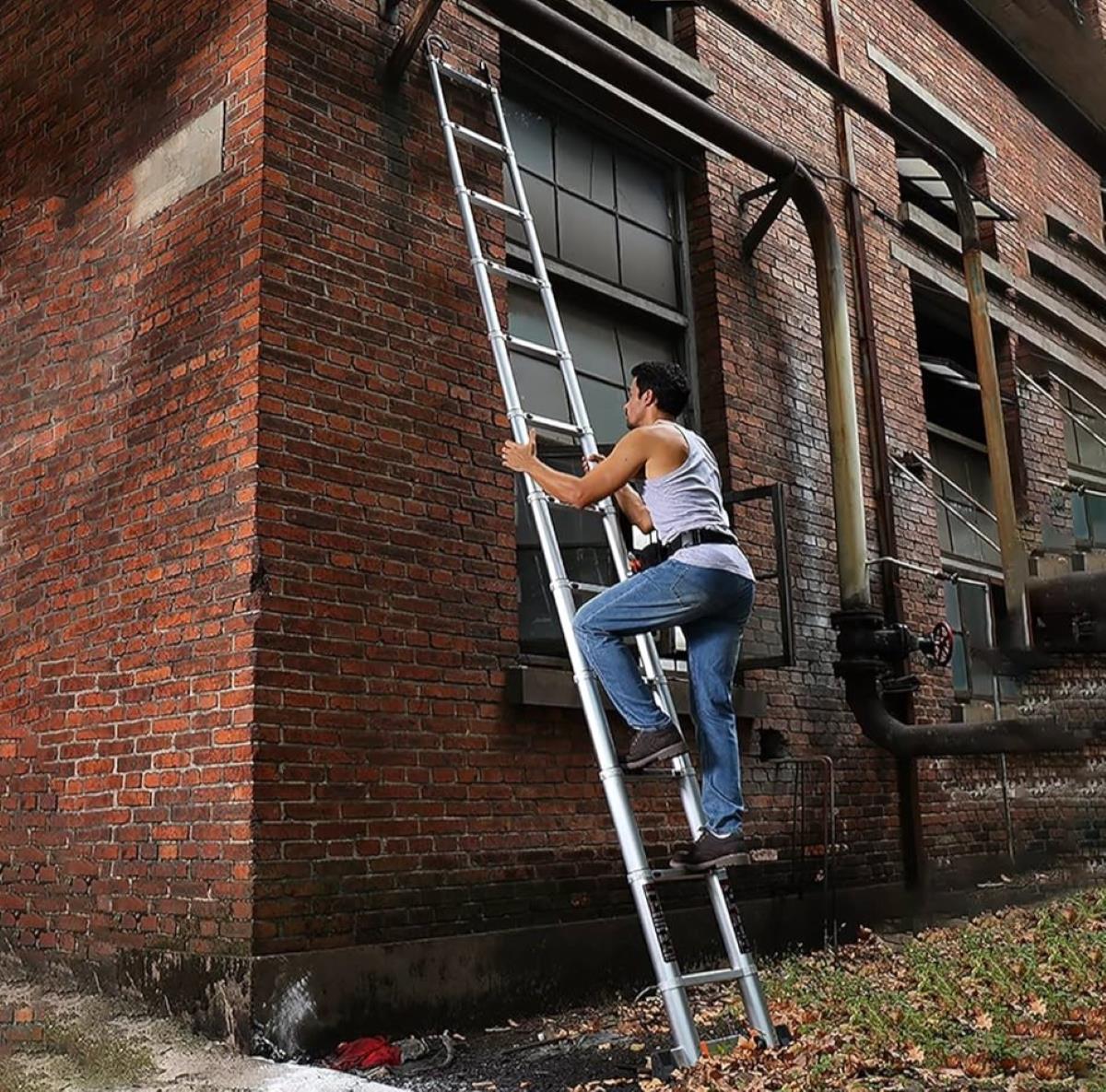










0 thoughts on “How To Properly Move An Articulated Ladder”